SUPPORTING PLAN Clean City Strategic Plan



Safe & Strong
A proud inclusive community that unites, celebrates and cares
Safe & Strong documents are guided by the Social Inclusion Lead Strategy. Supporting Plans, Action Plans and Policies cover such themes as being a child friendly City, children’s services, community safety and crime prevention, inclusiveness, community services, universal access, reconciliation, ageing, community harmony and youth.
Clean & Green
A clean and sustainable city with healthy waterways and natural areas
Clean & Green documents are guided by the Environmental Sustainability Lead Strategy. Supporting Plans, Action Plans and Policies cover such themes as managing our catchments and waterways, natural resources, hazards and risks, emergency management, biodiversity and corporate sustainability.
Prosperous & Innovative A smart and evolving city with exciting opportunities for investment and creativity
Prosperous & Innovative documents are guided by the Prosperity and Innovation Lead Strategy. Supporting Plans, Action Plans and Policies cover such themes as revitalising our centres, employment, investment, being SMART and creative, and providing opportunities for cultural and economic growth.
Moving & Integrated An accessible city with great local destinations and many options to get there
Moving & Integrated documents are guided by the Transport Lead Strategy. Supporting Plans, Action Plans and Policies cover such themes as accessibility, pedestrian and cycling networks, pedestrian and road safety, transport hubs, and asset management.
Healthy & Active
A motivated city that nurtures healthy minds and bodies
Healthy & Active documents are guided by the Health and Recreation Lead Strategy. Supporting Plans, Action Plans and Policies cover such themes as lifelong learning, active and healthy lifestyles, and providing quality sport and recreation infrastructure.
Liveable & Distinctive
A well designed, attractive city which preserves the identity and character of local villages
Liveable & Distinctive documents are guided by the Liveable City Lead Strategy. Supporting Plans, Action Plans and Policies cover such themes as preserving the character and personality of centres, heritage, affordable housing, and well managed development.
Leading & Engaged
A well-governed city with brave and future focused leaders who listen
Leading & Engaged documents are guided by Council’s Lead Resourcing Strategies. Supporting Plans, Action Plans and Policies cover such themes as open government, managing assets, improving services, long term funding, operational excellence, monitoring performance, being a good employer, civic leadership, and engaging, educating and communicating with our community.
The Strategic Planning Framework (SPF) maps out the role of all current and future Council strategies and plans that work to deliver the vision for the City. The framework works from the highest level of strategic direction in the Community Strategic Plan through to more detailed plans that will eventually drive works projects and programs on the ground. The framework is comprised of the following levels:
The COMMUNITY STRATEGIC PLAN (CSP) is our highest level plan and translates the community’s desired outcomes for the city into key destinations. The CSP includes community suggested actions which can be tested in the development of all other plans.
LEAD STRATEGIES are Council’s response to the CSP and provide high level strategic direction on key challenges facing the City. They are informed by a sound evidence base that considers key trends and an understanding of the implications of key issues and opportunities on the City.
SUPPORTING PLANS break down broad theme areas discussed in LEAD STRATEGIES into smaller themes providing high level actions. SUPPORTING PLANS identify broad works projects and programs required to deliver on these actions. Supporting plans include indicative costing and resourcing requirements and delivery timeframes.
DETAILED ACTION PLANS take actions from SUPPORTING PLANS and identify specific works projects and programs required to deliver on these actions. Supporting plans include detailed costing and resourcing requirements and delivery timeframes.
GUIDELINES, POLICIES AND CODES provide detailed information, rules for activities or guidance for specific works on Council or other lands.
The City of Canterbury Bankstown acknowledges the traditional Country of the Darug (Darag, Dharug, Daruk, Dharuk) and the Eora People.
We recognise and respect their cultural heritage, beliefs and relationship with the land. We acknowledge they are of continuing importance to Darug (Darag, Dharug, Daruk, Dharuk) and the Eora people living today.

Contents
01. Why do we need a Clean City Strategic Plan? ................. 7
1.1 Background ....................................................................7
1.2 What our community looks like 8
1.3 What we do now .............................................................9
1.4 The benefits of a clean, tidy and well-maintained city .......10
02. What you told us ..................................................... 11
2.1 Findings of the community consultation ...........................13
2.1.1 A Clean City means a proud community ....................13 2.1.2 Where we should focus ...........................................13
2.1.3 Keeping the City clean is a shared responsibility .......13 2.1.4 Council’s role is misunderstood 13 2.1.5 Clean is linked to health and safety ..........................14 2.1.6 Clean is closely tied to green ...................................14
2.2 What our teams said .......................................................15 2.2.1 Community engagement and education ...................15 2.2.2 Proactive services and infrastructure maintenance 15 2.2.3 A collaborative approach ........................................15 2.2.4 Enforcement action ................................................15
03. What we will do ...................................................... 17
3.1 The Four Pillars Clean City Model .....................................18
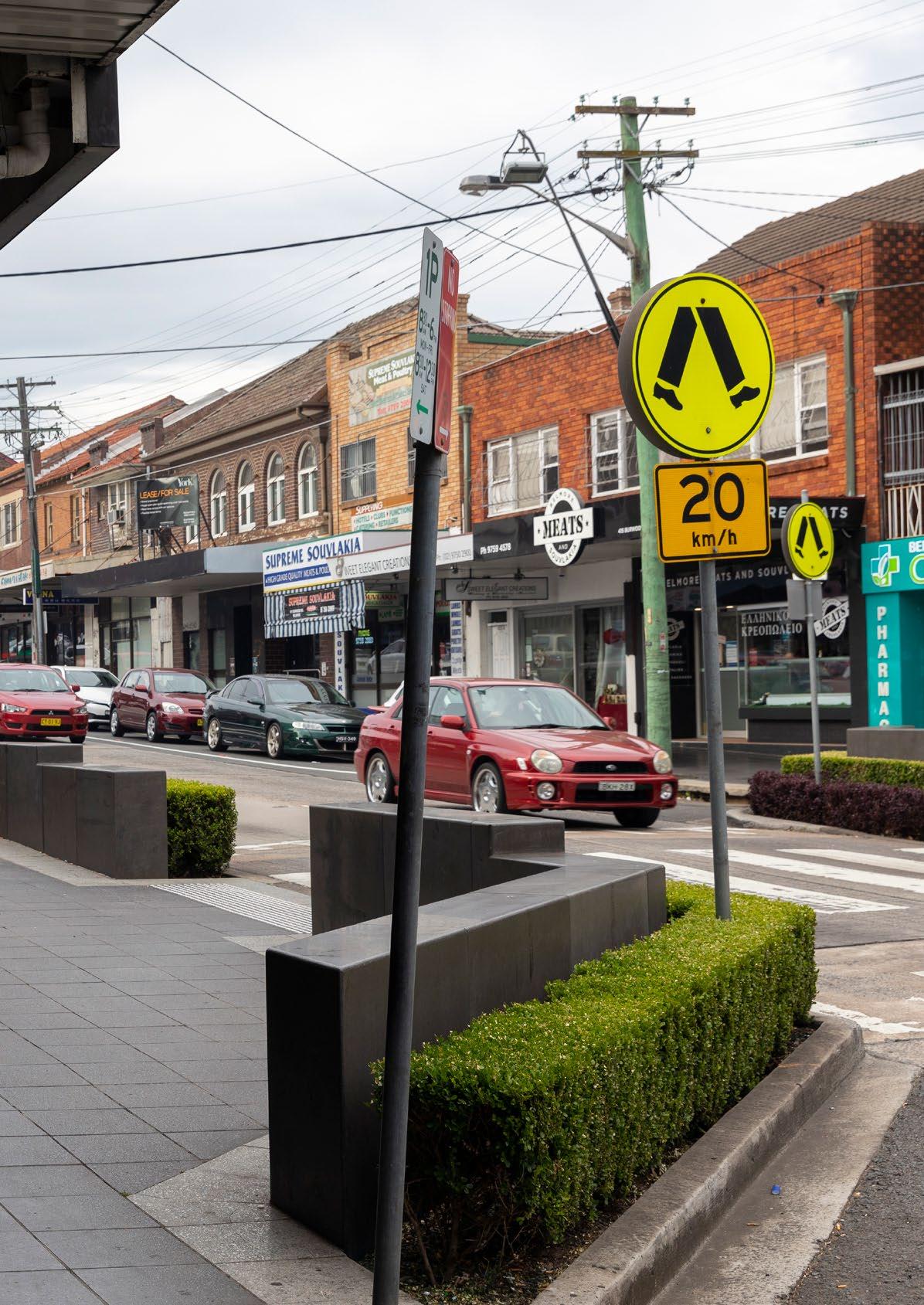
Every year, Council invests large amounts of money and effort in a wide range of programs and initiatives aimed at delivering a clean, tidy, and well-maintained city. However, residents consistently express low levels of satisfaction with the results of this investment.

Research for the 2020 Community Satisfaction Survey showed residents placed high importance on:

• The cleanliness of streets and public places;
• Having clean and litter-free rivers and creeks; and
• Preventing litter and illegal dumping.
The survey also showed residents have low satisfaction levels with these areas.
Creating and maintaining a Clean City cannot be achieved by any one team within Council –it needs the active participation of teams from across the organisation. It also needs the support and participation of the community and local businesses. This Clean City Strategic Plan (CCSP) will guide our focus, priorities, resources and actions so we can achieve the community’s expectation of a clean, tidy and well-maintained city.
A Clean City helps discourage anti-social behaviour like graffiti and vandalism1. It encourages residents and visitors to feel safe and proud, and to love where they live, work and play.
1 Yvonne Haigh. Promoting safer communities through physical design, social inclusion and crime prevention though environmental design, Monash University (2006)
The City of Canterbury Bankstown is one of the largest council areas in NSW with a population of 394,380, which is forecast to exceed 460,00 by 20362 (long-term impacts of COVID-19 are still to be seen). This growth will be accompanied by an increase in higher density dwellings and residents from nonEnglish speaking backgrounds.
The City is also one of the most diverse areas in both NSW and Australia as a whole. Currently, 44 per cent of the population were born overseas, with 18 per cent having arrived in Australia in the last five years. Our residents represent 129 nationalities and speak more than 200 languages. Six out of every 10 residents speak a language other than English at home.
The City includes suburbs that score well above the Greater Sydney and NSW averages for socio-economic disadvantage, and a number of suburbs that score below the average. While
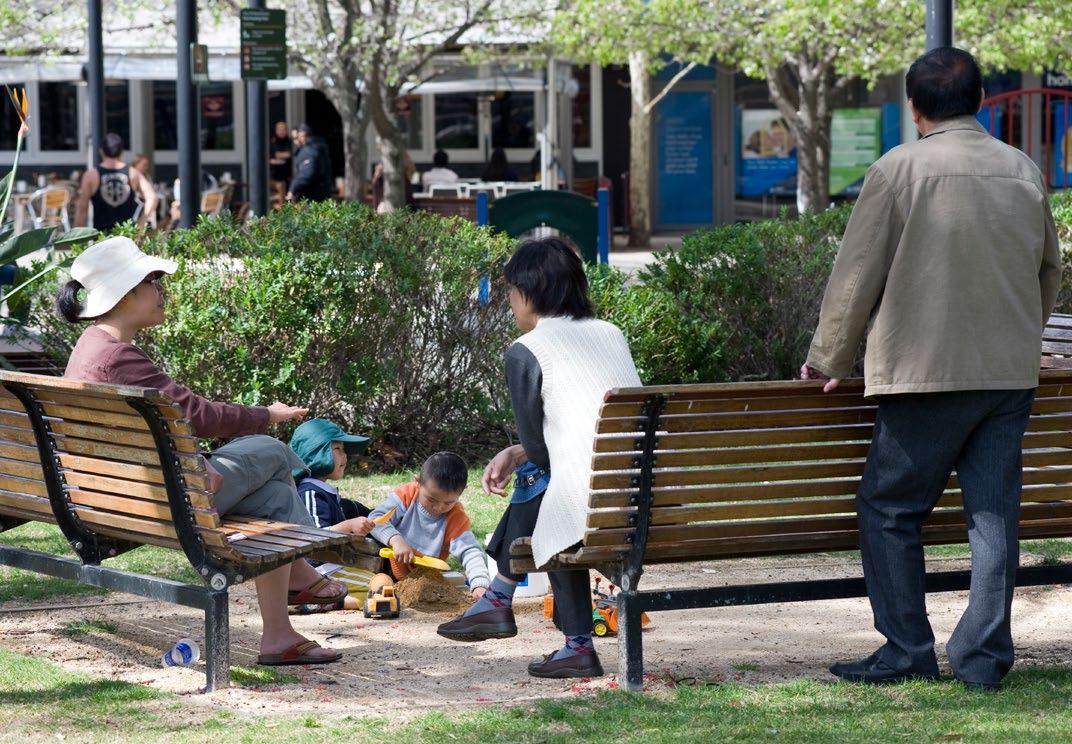
issues occur across the LGA, those suburbs with the highest socio-economic disadvantage are characterised by higher proportions of older-style and poorly maintained mediumdensity housing, with higher-than-average private rentals, and residents moving in and out of the area frequently. These suburbs also tend to have more issues with litter and illegally dumped waste3. For communities experiencing economic stress using the correct bin or booking a Clean-Up correctly are second order issues.
While this diversity creates a vibrant community, it also adds to the complexity of delivering a Clean City. Many new residents come from countries with very different waste management norms and often speak limited or no English.
The LGA also has a high number of renters who quickly move to other areas. These factors limit feelings of community and responsibility for keeping the area clean.
It’s safe to say the reputation of CanterburyBankstown isn’t all good. Media outlets often portray the area as afflicted by crime and potentially unsafe.


A large body of research supports the influence of perceived social norms on individual behaviour. In a given context, most people act in ways that approximate what they see as “normal” – even if they understand that behaviour to be wrong4. Poorly maintained public areas communicate that taking responsibility for tidiness is not the norm, and encourage more people to litter, vandalise and dump. This pattern is self-reinforcing, as engaging in anti-social behaviour, and the perception of anti-social norms, establish individual and group identities that do not value public cleanliness. Breaking this pattern is an essential step towards a clean and tidy Canterbury-Bankstown. To do this, we need to build norms of public cleanliness and shared responsibility, and encourage a community culture of pride in our area. Clean and well maintained spaces will be key to this process, and provide flow-on benefits to residents and the local economy.
Untidy streets, worn and tired street furniture, visible litter and illegal dumping all impact the view residents, visitors and local businesses have of an area. If these views are negative it can slow economic development. Our City is home to the second highest number of registered businesses in the State. This generates many benefits for our community including access to culturally appropriate goods and services; a vibrant and connected sense of community; and local jobs. Council’s Economic Development Strategy (June 2021) has been developed to maximise the opportunities available for the City to influence and drive economic development.
Achieving a clean, tidy and well-maintained city will help residents and visitors to have a positive perception of the area. Improved community perceptions will be reflected in media coverage, and help reposition the City as safe and attractive. In turn, this will attract new residents, visitors and businesses. Becoming a Clean City is an essential step toward a thriving, dynamic and real Canterbury Bankstown by 2028.
4 Cialdini, Robert B., Raymond R. Reno, and Carl A. Kallgren. “A focus theory of normative conduct: Recycling the concept of norms to reduce littering in public places.” Journal of personality and social psychology 58.6 (1990): 1015.
1.4 The benefits of a clean, tidy and well-maintained city
In developing this Strategic Plan, Council invited the community to tell us what they liked about the City, and the priority issues they want us to focus on.
The consultation was designed to maximise engagement and create opportunities for discussion with individuals and community stakeholders that represent the cultural, linguistic, demographic and economic diversity of the City. The specific elements of the consultation included:

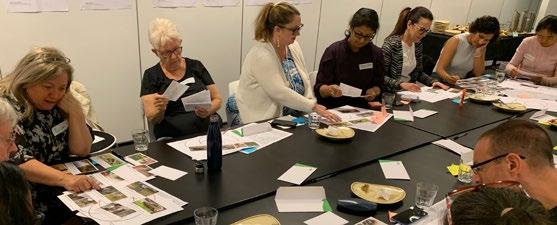
The consultation revealed:
2.1.1
The desire to live in a Clean City was expressed by everyone we heard from. What the City looks like and the relative importance of different features inspired a range of responses.
We heard that:
• The community wants to be proud of their area and their local streets;
• Having a Clean City will ensure residents and visitors enjoy spending time in CanterburyBankstown; and
• The community wants people to care and take responsibility for their waste and the environment.
While a wide range of issues emerged during the consultation, we received clear and consistent feedback on the issues the community wanted us to prioritise. Those issues are:
• Illegal dumping;
• Water pollution;
• Litter in parks;
• Clean and tidy town centres; and
• Clean and tidy public toilets.
Residents selected the focus areas based on a host of reasons: how frequently they see the issue, how easily they think the issue could be fixed, how much the issue impacts them personally and how much it impacts visitors’ perceptions of the area. Participants shared anecdotal experiences when asked how they had prioritised their issues.
The responsibility of individuals, communities and businesses was frequently raised during the consultation.
We heard that:
• Community pride has diminished over time;
• Maintaining the local area, particularly residential areas, should be the concern of individuals more so than Council;
• Businesses, community groups, and the state government need to take more responsibility for a Clean City. These groups should focus on town centres, laneways and litter entering the environment - particularly waterways;
• Residents want more education focused on individuals and businesses and the role they should play; and
• Council has a role in encouraging people to contribute to a Clean City.
It became clear during the consultation that residents are unsure about who has the responsibility, authority, and resources to address particular issues.
Participants frequently expressed a desire for Council to deal with specific issues that we don’t have the authority to do so and they are unaware of where else responsibility lies. Many participants were unaware:
• Of the resources currently invested in maintaining the City;
• Of the separation of powers between the different tiers of government.
• Of the cost and complexity needed to address specific issues;
• Of responsibilities and authority of utilities like Sydney Water, Ausgrid and State owned roads in these issues;
• That residents are responsible for maintaining nature strips; and
• That Council has limited authority over private property.
These misunderstandings often result in Council taking the blame for issues that we have no control over. For example, information about rights, responsibilities and authority in communications and easing referrals to the right body were identified as strategies to correct these misunderstandings.
2.1.5
The health and safety impacts of air quality, litter and illegal dumping were highlighted by many during the consultation.
Safety was key, particularly for older people and people with a disability. For example:
• Issues which inhibited access were a high priority for older people, people with children, and people with disabilities. Examples include illegal dumping, parking on nature strips, and unmaintained nature strips;
• Litter is also a distraction for assistance animals (such as guide dogs); and
• Elderly, people with children and people with disabilities are especially impacted by unclean public toilets.
Impacts on air quality were front of mind during the consultation, as it was conducted during the bushfires in October and November 2019.
2.1.6 Clean is closely tied to green
Well-maintained parks, gardens and lawns were identified as attractive and welcoming. They can inspire people to look after their local environment.
While leaf litter was an issue for some, especially where it clogs gutters and drains, most feedback highlighted a desire for more greenery and tree canopy across Canterbury-Bankstown.

“We need to see a strong urban tree canopy strategy from our Council.”
“Council could create events to get the community to be involved and take pride.”
Using the community consultation results as a basis, we undertook an organisational-wide consultation through workshops, surveys and interviews. This process sought to develop a shared vision of a clean, tidy and wellmaintained city and to understand the barriers and opportunities for achieving this.
The staff consultation called for:
2.2.1
Council needs to engage with the community on a regular basis to educate and encourage civicminded behaviour that helps create a Clean City. We need to communicate in a clearer and more prominent manner about the services we deliver.
A proactive approach to providing services and maintaining infrastructure are essential to improving the management and maintenance of resources, and for enabling rapid and efficient responses.
2.2.3
A cross-unit and cross-division approach is needed to deliver better outcomes. Working as one team will lead to more efficient use of resources, increase data sharing and harness diverse knowledge, skills and strengths.
Enforcement, including fines, are a valuable tool for changing behaviour. There will always be those community members who continue to do the ‘wrong thing’. Joint education and enforcement campaigns help to develop community pride and increase visibility of the important work undertaken by enforcement teams.


Council invests significant time, money and staff resources in a wide range of prevention, maintenance and cleansing programs in the key focus areas identified by the community and staff consultations.
These areas of focus are:
1. Preventing illegal dumping;
2. Clean and tidy town centres;
3. Clean and tidy parks;
4. Clean and tidy public toilets;
5. Healthy waterways; and
6. Organisation-wide co-operation.
However, residents consistently express low levels of satisfaction with the results of this investment. To identify the best way to resolve this inconsistency and achieve a Clean City, Council reviewed previous actions undertaken in the focus areas. This review showed that we need a different way of working.
Council also reviewed the results of the community and staff consultations and the reasons why the Eyes On It Anti-Dumping Campaign resulted in a 39 per cent reduction in illegal dumping.
The Eyes On It campaign was developed to address illegal dumping and the community’s increasing concern about it. The campaign results showed a strong correlation between streets and suburbs with high dumping levels and higher than average numbers of:
• Private rental properties;
• Residents who have moved into the area in the past five years;
• Residents who have recently arrived in Australia, with low or no English language skills; and
• Older medium density properties.
Identifying these characteristics increased Council’s understanding of the drivers that result in residents dumping and how to address them from a program and service perspective.
The campaign showed that data collection and analysis is key to fully understanding our services and ensuring that education programs are having the desired outcome with behaviour change. Also, working across teams in Council will result in service improvement for our community.
Council has established a cross-functional team focused on achieving a clean, tidy and well-maintained Canterbury-Bankstown.
The Clean City Steering Group meets regularly to maintain strong lines of communication between teams and ensure officers are more aware of other teams’ needs, the challenges they face, and potential service gaps.
In addition, the City Improvement Team was established in August 2021 with the aim of bringing together the different departments to help improve and enhance the look and feel of our town centres and public spaces. This team has several focus areas, which will contribute to a clean, tidy and well-maintained city.

The model is a new way of working and thinking across
a Clean City.
Using data to develop customerfocused initiatives, evolve our City and make real improvements. Measurable and observable data ensures that decisions are based on evidence and that we understand the scope, impact and drivers of issues. This ensures we can assess the impact of strategies implemented and we target resources where they are needed.
Installing and maintaining infrastructure is essential to promote positive outcomes. It needs to be: suitable for the conditions it will be exposed to; able to meet the needs it is used for; endure the uses and mis-uses of residents; and be easily serviced.
Programs are needed to: assist residents and businesses to understand their responsibilities; promote prosocial behaviour; encourage residents to report issues; promote Council services; and to inform residents of the actions Council takes to deliver a Clean City.
Enforcement is an important tool for addressing inappropriate behaviour. It can provide a first response in cases where health and safety are at risk or be used to reinforce legislative requirements. Increasing visibility of enforcement staff and messages as well as issuing fines are effective behaviour change strategies.
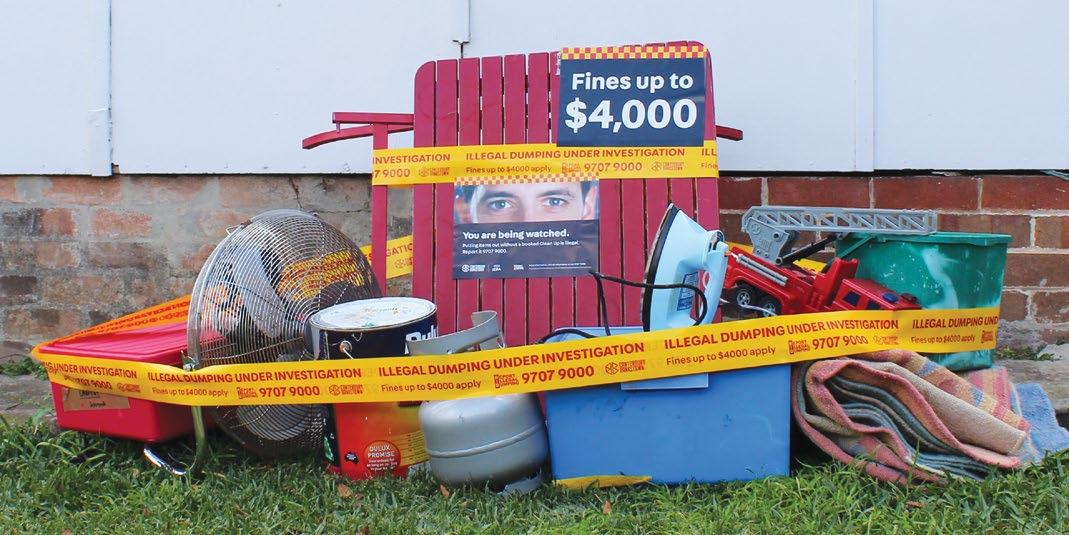
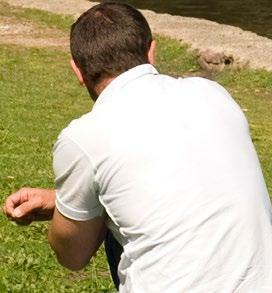
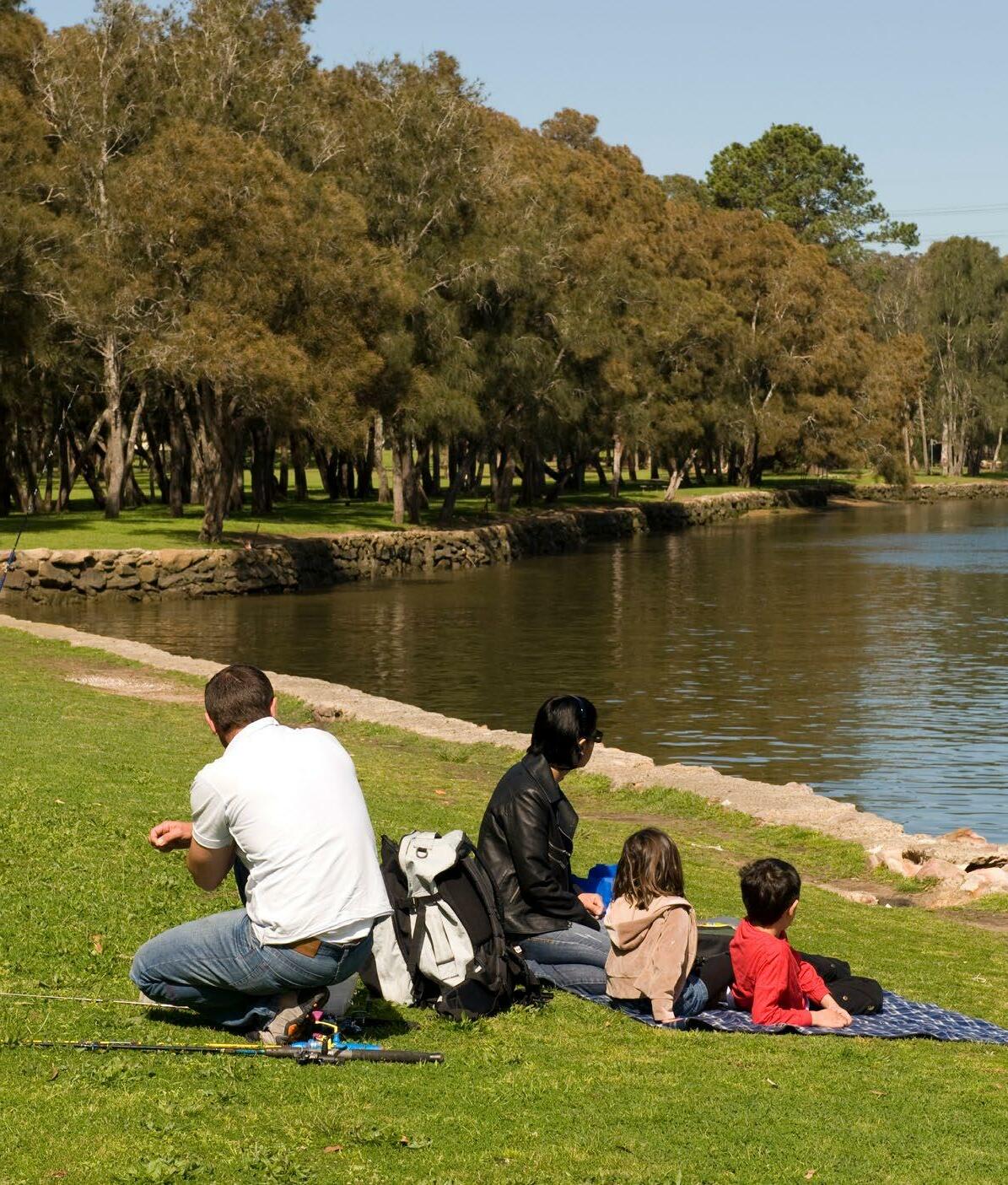
Safe & Strong
A proud inclusive community that unites, celebrates and cares
Safe & Strong documents are guided by the Social Inclusion Lead Strategy. Supporting Plans, Action Plans and Policies cover such themes as being a child friendly City, children’s services, community safety and crime prevention, inclusiveness, community services, universal access, reconciliation,ageing, community harmony and youth.
Clean & Green
A clean and sustainable city with healthy waterways and natural areas
Clean & Green documents are guided by the Environmental Sustainability Lead Strategy. Supporting Plans, Action Plans and Policies cover such themes as managing our catchments and waterways, natural resources, hazards and risks, emergency management, biodiversity and corporate sustainability.
Prosperous & Innovative A smart and evolving city with exciting opportunities for investment and creativity
Prosperous & Innovative documents are guided by the Prosperity and Innovation Lead Strategy. Supporting Plans, Action Plans and Policies cover such themes as revitalising our centres, employment, investment, being SMART and creative, and providing opportunities for cultural and economic growth.
Moving & Integrated An accessible city with great local destinations and many options to get there
Moving & Integrated documents are guided by the Transport Lead Strategy. Supporting Plans, Action Plans and Policies cover such themes as accessibility, pedestrian and cycling networks, pedestrian and road safety, transport hubs, and asset management.
Healthy & Active
A motivated city that nurtures healthy minds and bodies
Healthy & Active documents are guided by the Health and Recreation Lead Strategy. Supporting Plans, Action Plans and Policies cover such themes as lifelong learning, active and healthy lifestyles, and providing quality sport and recreation infrastructure.
Liveable & Distinctive
A well designed, attractive city which preserves the identity and character of local villages
Liveable & Distinctive documents are guided by the Liveable City Lead Strategy. Supporting Plans, Action Plans and Policies cover such themes as preserving the character and personality of centres, heritage, affordable housing, and well managed development.
Leading & Engaged
A well- governed city with brave and future focused leaders who listen
Leading & Engaged documents are guided by Council’s Lead Resourcing Strategies. Supporting Plans, Action Plans and Policies cover such themes as open government, managing assets, improving services, long term funding, operational excellence, monitoring performance, being a good employer, civic leadership, and engaging, educating and communicating with our community.
The Strategic Planning Framework (SPF) maps out the role of all current and future Council strategies and plans that work to deliver the vision for the City. The framework works from the highest level of strategic direction in the Community Strategic Plan through to more detailed plans that will eventually drive works, projects and programs on the ground. The framework is comprised of the following levels:
The COMMUNITY STRATEGIC PLAN (CSP) is our highest level plan and translates the community’s desired outcomes for the city into key destinations. The CSP includes community suggested actions which can be tested in the development of all other plans.
LEAD STRATEGIES are Council’s response to the CSP and provide high level strategic direction on key challenges facing the City. They are informed by a sound evidence base that considers key trends and an understanding of the implications of key issues and opportunities on the City.
SUPPORTING PLANS break down broad theme areas discussed in LEAD STRATEGIES into smaller themes providing high level actions. SUPPORTING PLANS identify broad works projects and programs required to deliver on these actions. Supporting plans include indicative costing and resourcing requirements and delivery timeframes.
DETAILED ACTION PLANS take actions from SUPPORTING PLANS and identify specific works projects and programs required to deliver on these actions. Supporting plans include detailed costing and resourcing requirements and delivery timeframes.
GUIDELINES, POLICIES AND CODES provide detailed information, rules for activities or guidance for specific works on Council or other lands.

The Action Plan focuses on the six key focus areas identified in the community and staff consultations.
The Four Pillars Clean City Model is critical to addressing the key focus areas. The Model includes:
1. Data collection and analysis – using data to develop customer-focused initiatives, evolve our City and make real improvements;
2. Infrastructure and services – installing and maintaining infrastructure is essential to promote positive outcomes;
3. Education – programs are needed to assist residents and businesses in understanding they have a responsibility to keep the City clean, tidy and well-maintained. Programs are also needed to inform residents of the relevant services provided by Council; and
4. Enforcement – increase in visibility of enforcement staff and the development of joint education and enforcement programs.
The Action Plan will be measured by resident satisfaction with the key focus areas in the Community Satisfaction Survey.
While Council currently devotes significant financial resources to maintaining and cleaning public spaces and amenities, we recognise that to fully achieve the community’s and Council’s desired level of cleanliness we will require greater financial resources than are currently allocated. In 2021, Council was granted a Special Rate Variation with the majority of the funds allocated to maintaining community assets and keeping the City clean.

The actual cost implications are unclear. The Four Pillars Clean City Model will impact upon and determine the cost of each individual project.
It’s highly likely we will see additional services, more frequent servicing, new or upgraded infrastructure, machinery and equipment, and additional staffing.
The responsibility for a Clean City needs to be embedded across the entire Council, however the actions have been assigned to the responsible operational area/s for reporting purposes only.
The Action Plan will be reviewed every two years and we will report our progress to the community through our Integrated Reporting and Planning Framework.
The Action Plan will focus on the six key focus areas identified in the community and staff consultations: Focus Areas and Aims
Prevent household items, construction materials, and asbestos being dumped in public places and increase awareness that dumping is illegal and there are applicable fines.
Improve the look and feel of town centres through: better service coordination; improved infrastructure installation and maintenance; and increased engagement with residents and businesses. Community outreach will aim to build an understanding of shared responsibility for keeping town centres clean and tidy.
Improve the maintenance and servicing of parks and develop litter prevention campaigns to encourage residents to look after their local parks.
Improve the usability of toilet facilities through increased maintenance and servicing.
Reduce pollution and litter in waterways, including organic matter (i.e. sediment, grass), drink containers, plastic bags, food packaging, cigarette butts and microplastics. Waterways include rivers, creeks, open water bodies, drainage lines and close pipe systems.
Increase co-ordination and collaboration across Council to create a clean, tidy and well-maintained city.
1.1
Review and identify service levels and staffing resources to prevent, enforce and collect illegal dumping.
1.2 Investigate the feasibility of mini campaigns for clean streets in residential areas.
1.3
Continue to improve the Booked Bulky Waste Clean-Up service to reduce illegal dumping of household waste.
1.4
Work collaboratively with strata managers, NSW Department of Housing and owners to improve amenity and reduce dumping in and around Multi Dwelling Housing and Residential Flat Buildings.
1.5 Continue to roll out Eyes On It education and awareness campaigns.
1.6
Continue to develop joint enforcement and education programs based on community information in industrial areas, including railway corridors.
Sustainable Future and Waste Services High
Sustainable Future High
Sustainable Future High
Sustainable Future High
Sustainable Future Ongoing
Regulatory Services Ongoing
1.7
Develop joint education and enforcement programs focused on illegal dumping at charity donation bins and shops.
1.8 Undertake illegal dumping and litter hotspot prevention projects in residential and open spaces.
1.9 Improve awareness programs on enforcement actions undertaken.
RID Ongoing
Regulatory Services Medium
Regulatory Services and Communications Medium
Ref. Action Unit/s Responsible Priority
2.1
2.2
Review the current bin cleaning, servicing, and maintenance schedules, to guide and develop service standards and resource allocation for clean and well-maintained bins.
Review the current cleaning and maintenance service schedules for town centres, to guide cleaning and maintenance service standards and resource allocation
2.3 Investigate the alignment and coordination of all services to contribute to a place-based management of town centres.
2.4
Work collaboratively with businesses to develop and implement a project to address littering and illegal dumping in commercial and industrial areas (front and back of business), including investigate better waste collection systems (shared and locked skip bins, bin cages, cardboard balers, above ground compactor).
City Improvement High
City Improvement High
City Improvement Medium
Sustainable Future High
2.5
Lobby State Government agencies such as Transport for NSW to commit to regularly maintaining their public places.
2.6
Develop joint programs with local Business Centres and Chambers of Commerce.
2.7 Liaise with Local Area Commands to address graffiti and vandalism in public places.
2.8
Develop and implement programs that build community pride and ownership in town centres (e.g. We Like Our Town Centres Litter Free).
2.9 Waste Services and City Cleaning staff to be included in designing town centres.
Sustainable Future Ongoing
City Marketing & Investment Low
Community Services Ongoing
Sustainable Future Low
City Transformation Ongoing
Ref. Action Unit/s Responsible Priority
3.1
Review the current bin cleaning, servicing, and maintenance schedules, to guide and develop service standards and resource allocation for clean and well-maintained bins.
3.2 Develop programs to assist permanent sporting associations to manage litter and waste.
3.3
Expand pro-active litter reduction programs in parks, such as We Like Our Park Litter Free program.
City Improvement High
Sports and Recreation Low
Sustainable Future Medium
Ref. Action Unit/s Responsible Priority
4.1
Review the current cleaning and maintenance service schedules for public toilets to guide service standards and resource allocation.
4.2 Investigate how to best provide cleaning schedule status and feedback to the community.
City Improvement High
City Improvement Low
Ref. Action Unit/s Responsible Priority
5.1
Undertake a scoping study to identify pollution sources and control strategies (infrastructure and services), and how these affect our waterways.
5.2
Develop a program to review trees/other flora that are planted in public spaces (streets in particular) to reduce the amount of organic litter entering waterways (i.e. prioritising planting of non-deciduous trees where appropriate).
5.3
Develop a program to incorporate pollution control/ water sensitive urban design practices into capital works (i.e. installation of typologies at multiple scales from source to end of pipe).
Asset Systems & Planning High
Sustainable Future and Waste Services Low
Asset Systems & Planning Low
5.4
Re-establish and implement the stormwater audit program and face-to-face education for medium and high-risk businesses.
Regulatory Services Low
5.5
5.6
Conduct new underground petroleum storage systems site audits at service stations.
Continue to implement Get the Site Right campaign, to increase awareness of the dangers of runoff from building sites impacting the environment and encourage developers, builders and home renovators to implement appropriate erosion and sediment controls.
5.7
5.8
Work collaboratively with Cooks River Alliance, Georges Riverkeeper, Parramatta Riverkeeper and AUSMAP on the development, targets and principles of each catchment’s litter strategy and programs.
Review Development Control Plan requirements for land holders regarding pollution prevention.
Regulatory Services Low
Regulatory Services High
Sustainable Future High
Strategic Planning Low
Ref.
Undertake initiatives to educate community and manage and improve local waterway and waterbody health including:
• implementing an interactive media and social media campaign to engage and educate the community about litter devices and broader river health (year one);
5.9
• undertaking targeted water quality analysis and function reporting for water sensitive urban design and open water bodies (years one and two);
• general waterway health monitoring and education programs.
Sustainable Future High 5.10 Continue to develop water-based activities and events to connect the community with the local waterways (increase ownership). Sustainable Future High
Develop a community engagement program specifically focused on targeting organic litter. Sustainable Future Low
Clean City Steering Group Medium
Review IT systems of teams, to ensure we utilise technology to improve the way we work. Clean City Steering Group Medium 6.5 Investigate the options for increasing use of applicable technology such as portable cameras, CCTV and mobile phone apps to identify litter, illegal dumping and graffiti in laneways, town centres and parks.
Sustainable Future Low